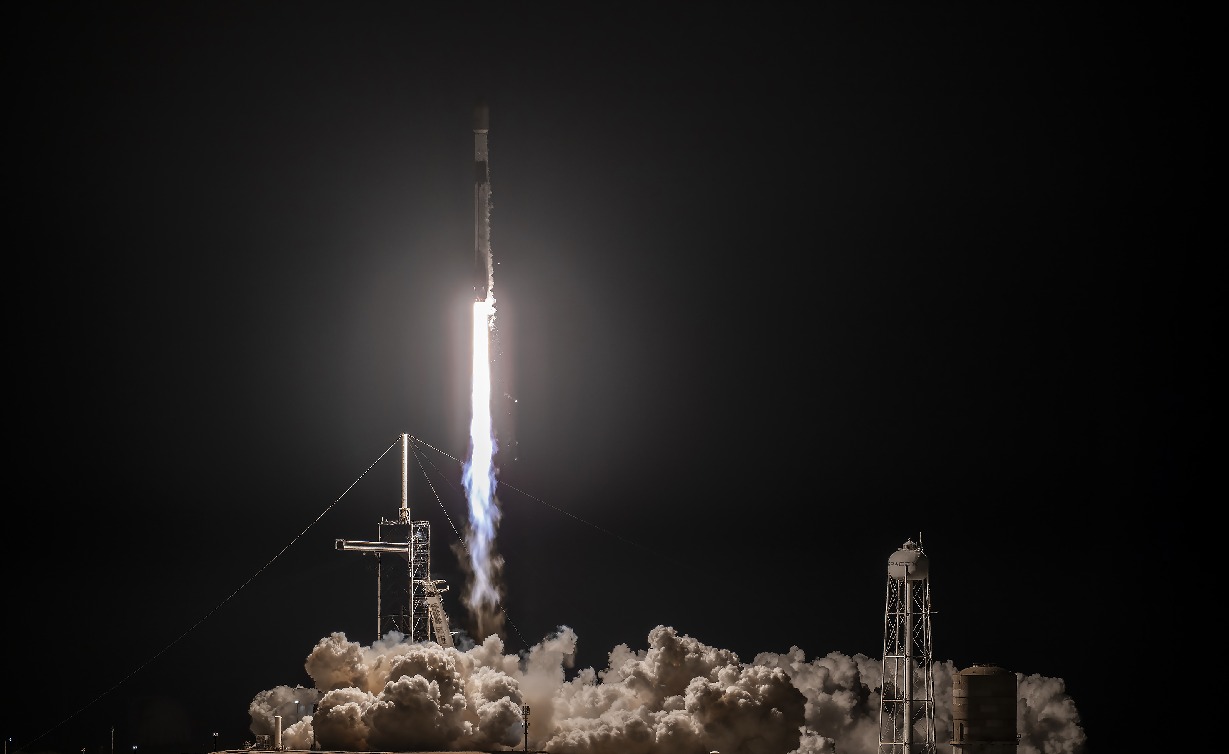After suffering an unprecedented malfunction earlier this month, the SpaceX Falcon 9 rocket — one of the most prolific space launch vehicles in the world— is reportedly cleared to make a comeback.
The Federal Aviation Administration (FAA), which oversees the licensing of commercial rocket launches and evaluates accidents, declared on July 25, that it had determined the Falcon 9’s failure in orbit on July 11 posed “no public safety issues”, enabling the rocket to promptly return to flight.
In fact, at the time of publishing this report, SpaceX wrote on X (previously Twitter) that Falcon 9 was back and had already delivered 23 Starlink satellites in the low-earth orbit.
A SpaceX Falcon 9 rocket had an uncommon malfunction on July 11, 2024, during the launch of the Starlink satellite from California’s Vandenberg Space Force Base. The Falcon 9 made its way into orbit during the first leg of the mission using its first-stage booster, the bottommost section of the rocket with nine engines that provide the first burst of power at liftoff. This went without a hitch.
However, the rocket’s second stage experienced an unforeseen failure, which is designed to ignite and propel the satellites to their final orbital destination in the event of a first-stage failure. Subsequently, SpaceX revealed that the second stage had suffered an oxygen leak. Liquid oxygen, sometimes abbreviated as LOX, is frequently employed as a rocket propellant or oxidizer.
FALCON 9 RETURNS TO FLIGHT
This morning’s launch of 23 Starlink satellites, seen here transiting the Moon, was the first since a July 11 second stage anomaly during a Starlink mission from California grounded the Falcon fleet. In just 15 days, SpaceX identified and resolved the… pic.twitter.com/HMi0T365Bq
— John Kraus (@johnkrausphotos) July 27, 2024
American billionaire and SpaceX CEO Elon Musk called the incident an engine “RUD” (Rapid Unscheduled Disassembly), which is code for an engine explosion or disintegration. The malfunction led to the deployment of 20 Starlink internet satellites into a lower-than-intended orbit, which means Earth’s gravity could draw them out of space.
An investigation was launched by the FAA in the aftermath of the incident. While a larger and more elaborate investigation is still ongoing, the watchdog said, “This public safety determination means the Falcon 9 vehicle may return to flight operations while the overall investigation remains open, provided all other license requirements are met.”
In an email to CNN, the Federal Aviation Administration (FAA) said it discovered that “all debris from the anomaly has reentered, and there continues to be no reports of public injury or public property damage.”

SpaceX has stated that it intends to resume Falcon 9 operations on July 27 to deploy multiple Starlink internet satellites. This essentially indicates that SpaceX had an incredibly rapid return to flight, with approximately just two weeks of downtime. This is significant since the Falcon 9 is the cornerstone of the American rocket industry. It has completed over 60 missions thus far in 2024.
This is not the first time that the Falcon 9 suffered a malfunction. In 2016, for instance, a Falcon 9 exploded on the pad during pre-flight testing. The AMOS-6 communications satellite, which was part of the rocket’s payload, was also lost due to that incident. However, the comeback this time around is faster. It also clears the air around some lined-up launches, which ran into uncertainty after the incident on July 11.
Previous reports indicated that several clients, including NASA and SpaceX’s Starlink satellites, would likely be impacted by the launch failure. Due to its high flight rate and lack of capacity on other vehicles, the space industry has become more and more dependent on the Falcon 9.
Going ahead, Falcon 9 will have to participate in missions, including the Arctic Satellite Broadband Mission, and launch telecommunication satellites. Also, with permission to restart Falcon 9 missions, SpaceX is set to resume its essential but routine task of launching crew members to the International Space Station. The tenth of these flights, which SpaceX is doing on behalf of NASA, is scheduled to depart in August.
While the SpaceX Falcon 9 has already made a comeback and will be taking on the assigned missions, it is imperative to reflect that it has been a difficult time in space for the US and China. In addition to Falcon 9 malfunctioning, China also suffered a major setback in space as its rocket exploded.
China Suffers Setback In Space
Beijing Tianbing Technology Co. announced on June 30 that during a test, the first stage of their underdevelopment, Tianlong-3 rocket broke off from its launch pad owing to a structural malfunction and landed in a hilly region off the central Chinese city of Gongyi.
Following an initial assessment, Beijing Tianbing, also known as Space Pioneer, claimed in a statement on its official WeChat account that there were no reports of injuries. According to a different statement from the Gongyi Emergency Management Bureau, pieces of the rocket stage were dispersed within a “safe area” but started a local fire.
The rocket shot straight up into the sky before losing strength and rotating horizontally, falling back to Earth, and exploding into flames on neighboring forested hills, as seen in the dramatic video footage from the incident that went viral on social media.
Wow. This is apparently what was supposed to be a STATIC FIRE TEST today of a Tianlong-3 first stage by China's Space Pioneer. That's catastrophic, not static. Firm was targeting an orbital launch in the coming months. https://t.co/BY9MgJeE7A pic.twitter.com/L6ronwLW1N
— Andrew Jones (@AJ_FI) June 30, 2024
According to Space Pioneer, the Tianlong-3’s first stage fired normally during a heat test but later broke away from the test bench due to a structural malfunction and landed 1.5 km (0.9 miles) away in a hilly location.
A rocket can have multiple stages: the first or lowest, which ignites and launches the rocket into the air. The first stage detaches as the fuel runs out, and the second stage ignites to keep the rocket moving forward.
The incident is notable because Space Pioneer maintains that the Tianlong-3’s performance is similar to that of SpaceX’s two-stage rocket, the Falcon 9. As the news of the rocket’s explosion started making rounds, netizens on X mocked that a cheaper Chinese version of Falcon-9 went into flames.
- Contact the author at sakshi.tiwari9555 (at) gmail.com
- Follow EurAsian Times on Google News




